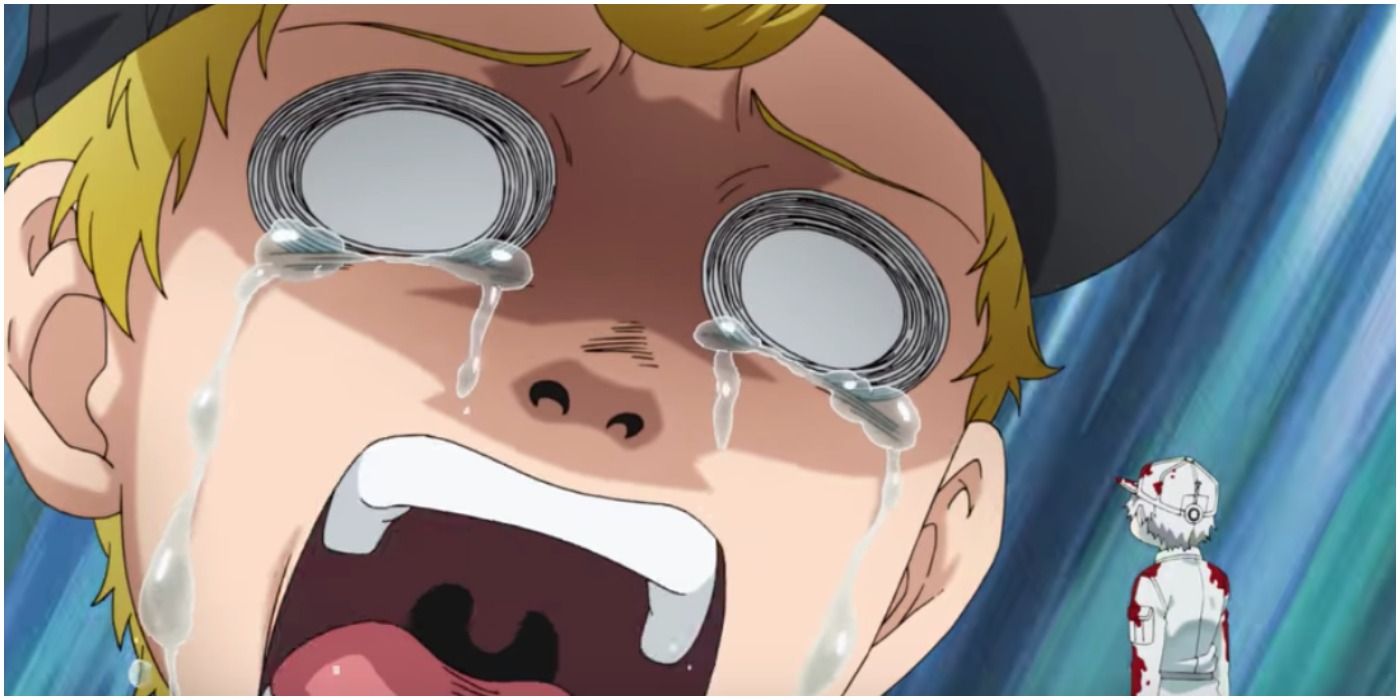Throughout its 14-episode run, Cells at Work! covered a wide range of illnesses and ailments that affect the human body, from things as trivial as the flu and the common cold to more serious conditions like cancer and hemorrhagic shock, but as we all know, there more than 14 things that can go wrong in the human body. If the show attempted to cover every single thing, it would probably need just as many episodes as One Piece!
Below are 5 opportunities to cover some truly harrowing conditions we feel the show missed out on, as well as 5 that the show did well to avoid due to the lack of a silver lining.
10 Should've Explored: Malnutrition
While Cells at Work! did tackle the topic of dehydration, it didn't at all address the problem of malnutrition that plagues some 800 million people around the world. Viewers have already seen Red Blood Cells transporting nutrients throughout the body alongside oxygen, and an episode revolving around malnutrition could feature these same Red Blood Cells doing their best to transport meager supplies while the city around them begins to crumble.
They would appreciate the additional challenge presented for the White Blood Cells as they struggle to defeat invading germs while running on fumes.
9 Should Avoid: Depression
Despite being classified as a mental illness, depression has been proven to have adverse effects on a person's physical health. Regardless, it would be very difficult to illustrate the person whose body houses the characters in the anime going through different stages of depression, since the anime avoids giving viewers any glimpses of the outside world.
8 Should've Explored: Bladder Infection
While Cells at Work! has shown how pathogens are expelled from the body through coughs and sneezes, the show hasn't illustrated how the body expels waste. Though many may think that this sounds disgusting, the anime could easily depict these grotesque (but natural and necessary) processes in giving fans an elaborate nuclear waste disposal plant, or something along those lines. While the show has touched on things like food poisoning, which involves food and digestion, the series has failed to delve into issues that affect the kidneys, bladder, urethra, and other organs that are involved in waste removal.
This would've not only given fans a change in scenery, but would've opened the door for some very different characters to be introduced.
7 Should Avoid: Organ Failure
Cells at Work! does a good job at illustrating just how tirelessly our organs and cells are working up until the day we die. All of the characters have jobs, and yet none of them are seen taking a break or asking for a vacation. Nevertheless, there are times in which some organs, like the brain, kidneys, or heart, can begin to fail, forcing someone to live with the aid of powerful medications or machines just to stay alive.
Cells at Work! is mostly an upbeat, comical anime, involving ailments that can be treated. Organ failure is just a little too depressing for the tone of the series, given the fact that there's really no way to restore organs back to normal once they've started failing. Sure, there lies a cool opportunity to show some foreign medication coming into the world to aid the cells (similar to how steroids were depicted as a raging robot), but overall, this ailment would leave viewers too depressed to watch any more episodes.
6 Should've Explored: Low Blood Pressure
Cells at Work! does a great job at illustrating high blood pressure during a variety of scenarios in which the Red Blood Cells begin to crowd one another as they rush to a destination, often causing more harm than good. We can't remember a time when the show has illustrated low blood pressure.
Low blood pressure would most likely be represented as the complete opposite of high blood pressure, with the Red Blood Cells keeping more distance between one another and moving at a lackluster pace. Of course, this would be caused by some condition that would involve the White Blood Cells having to step in and defeat a pathogen amidst Red Blood Cells who just aren't doing their jobs to the fullest.
5 Should Avoid: Lupus
Lupus is an autoimmune disease that causes the body's immune system to attack otherwise healthy tissues and cells. There's no cure for this disease, meaning that individuals with it are forced to suffer through the many different symptoms and flare-ups for the rest of their lives.
It's caused by B cells in the body producing autoantibodies, which go on to target otherwise healthy tissue. While it would be interesting to see the character B Cell suddenly go rogue and begin attacking his former comrades, the fact that this disease is untreatable would mean that there'd be no happy ending for a lupus-themed episode.
4 Should've Explored: Prediabetes
At this current point in time, diabetes has no cure, but prediabetes does! Prediabetes simply means that there are higher than normal sugar levels in the blood. With no lifestyle changes, individuals with this condition will progress onto full-blown diabetes, a condition that affects 1 in 10 Americans. Cells at Work! has touched on Red Blood Cells and their reliance on glucose for energy, but it hasn't delved into how this glucose is processed, or even what happens when there is too much or too little of it for the cells that rely on it for energy.
To illustrate this in the show, the Red Blood Cells could comically be depicted as gaining enormous amounts of weight due to the newfound increase in glucose available to them, and the lifestyle changes that are required to cure prediabetes could be illustrated by showing these Red Blood Cells engaging in some high-intensity workouts to whip themselves back into shape.
3 Should Avoid: Human Immunodeficiency Virus
Perhaps one of the most feared immunocompromising viruses is the Human Immunodeficiency Virus (or HIV), a disease that compromises a target's immune system by infecting the body's T cells and decreasing their numbers over time.
Fans of the show are familiar with the over masculine T Cells, and an episode detailing their inevitable decline wouldn't sit well with viewers. Once infected with HIV, a person's immune system ceases to function at its prime, and as the body becomes overrun with pathogens, fans will be forced to sit through some of their favorite characters kicking the bucket.
2 Should've Explored: Vaccines
Vaccines have played an integral role in modern medicine, essentially eradicating certain diseases like polio and measles, but with the increasing prevalence of anti-vaccination movements, these diseases have made unexpected returns.
An episode detailing how vaccines work (and how they can occasionally make people with poor immune systems sick) can do a lot to explain the science of vaccines in a fun way to take some of the stigma away from these revolutionary medical solutions.
1 Should Avoid: Modern-Day Pandemics
As if 2020 hasn't been full of surprises, Coronavirus has taken the world by storm. The pandemic has affected people in over 120 countries, with that number expected to increase as testing becomes more widespread. People are confused and scared, and with the massive amounts of misinformation spreading about the diseases, like other modern-day pandemics, a Cells at Work! episode run the risk of adding fuel to the flames of panic (or even trivializing a crisis).
In the future, when potent viruses like the Coronavirus becomes just as treatable as the flu, Cells at Work! would be free to tackle the illness in their own quirk way, but for now, any anime should stay far away from this one and as close to a source of soap and water as humanly possible.











